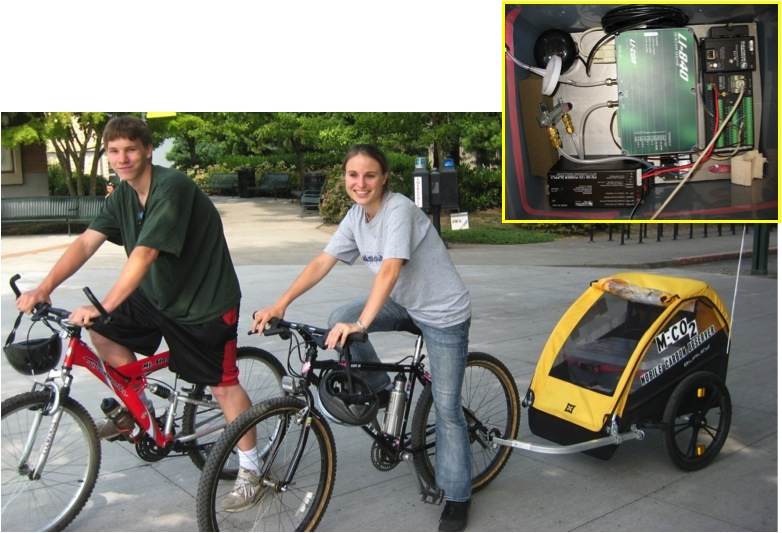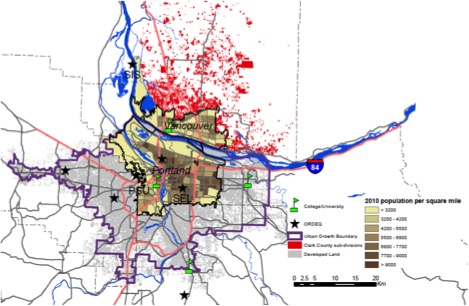
Department of Physics
Portland State University
Current Research Areas
Emissions from rice agriculture
Role of trees in the methane budget
Methyl halide emissions from estuaries
Carbon flux from cities
Metropolitan regions are responsible for ~70% of anthropogenic emissions of greenhouse gases (GHG) through concentrated use of energy and material goods. With more than half of the world's population and roughly three quarters in industrialized nations currently living in urban centers today, understanding the impact of urbanization on global GHG emissions is central to the study of the impacts of humans on climate. As human population continues to grow and migrate to urban centers in great numbers, these emissions will continue to substantially challenge implementation of mitigation policy strategies. The rate and manner in which developing nations modernize and urbanize are some of the most important drivers of future GHG emissions, which in turn will drive future climate perturbation. ing isotopic composition of atmospheric trace species due to interfering isobars and isotopic fractionation effects in measurement.
Collectively, anthropogenic activities in urban areas are in large part responsible for the upward trajectory in global carbon dioxide (CO2) concentrations. Reacting to this reality and in the absence of national regulatory efforts, U.S. cities, counties and states are developing independent climate policies, creating a patchwork of regulations and targets nationwide. The Portland region is a model case study as a mid-sized metropolitan area; it is the most populous region in Oregon with ~2.2 million including surrounding cities of Gresham, Beaverton and Hillsboro (OR) and Vancouver (WA). It has a geographical extent ~17,000 km2 . The City of Portland and Multnomah County have a long history of focusing on carbon emissions, preparing emissions inventories since the early 1990s and developing early strategies to incorporate GHG mitigation into city planning over the past two decades.
Widely accepted is that effective implementation of carbon mitigation actions will require assessment of both direct emissions which occur in the city and indirect emissions from electrical consumption which typically occur well outside city limits. To this end, we developed a small network of CO2 sensors deployed in the Portland metropolitan area. Beginning in 2009, we collected three years of continuous measurements from three strategic atmospheric monitoring locations. The measurement network was supprted by field intensives which included measured CO2 concentrations using a mobile low-carbon bbicycle-based platform (pictured above), measurements of the isotopic composition of CO2 and measurements of ambient methane. Initial results of this work were published in Atmospheric Environment:
Funding for this work was provided by the Miller Foundation and the Institute for Sustainable Solutions at Portland State University

